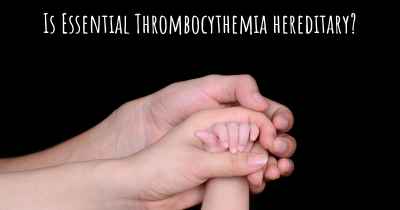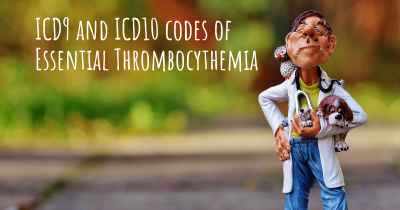17
What is the history of Essential Thrombocythemia?
When was Essential Thrombocythemia discovered? What is the story of this discovery? Was it coincidence or not?

Approximately 25-33% of patients with essential thrombocytosis (primary thrombocythemia) are asymptomatic at diagnosis. The remainder report vasomotor symptoms or complications from thrombosis or bleeding. Most symptomatic patients present with symptoms that relate to small- or large-vessel thrombosis.
Microvascular occlusion of the toes and fingers causes digital pain; gangrene; or erythromelalgia, which is is characterized by burning pain and dusky extremity congestion
The pain increases with exposure to heat and improves with cold; a single dose of aspirin may provide relief for several days
Headache is the most common neurologic symptom. Patients also report paresthesias and episodic transient ischemic attacks; transient neurologic symptoms include the following:
Unsteadiness
Dysarthria
Dysphoria
Vertigo
Dizziness
Migraine
Syncope
Scotoma
Seizures
Thrombosis of large veins and arteries is common and may result in occlusion of the leg, coronary, and renal arteries. Other arteries may be involved, including retinal arteries. [21] Venous thrombosis of the splenic, hepatic, or leg and pelvic veins may develop. Priapism is a rare complication. Pulmonary hypertension may result from pulmonary vasculature occlusion.
Bleeding complications are as follows:
The gastrointestinal tract is the primary site of bleeding complications; approximately 40% of these patients have duodenal arcade thrombosis, resulting in sloughing of the duodenal mucosa, simulating a duodenal ulcer
Other sites of bleeding include the skin, eyes, gums, urinary tract, joints, and brain
Bleeding is usually not severe and only rarely requires transfusion
The bleeding is generally associated with a platelet count greater than 1 million/µL
Constitutional symptoms occur in 20-30% of patients. Weight loss is unusual. Other symptoms include sweating, low-grade fever, and pruritus.
Microvascular occlusion of the toes and fingers causes digital pain; gangrene; or erythromelalgia, which is is characterized by burning pain and dusky extremity congestion
The pain increases with exposure to heat and improves with cold; a single dose of aspirin may provide relief for several days
Headache is the most common neurologic symptom. Patients also report paresthesias and episodic transient ischemic attacks; transient neurologic symptoms include the following:
Unsteadiness
Dysarthria
Dysphoria
Vertigo
Dizziness
Migraine
Syncope
Scotoma
Seizures
Thrombosis of large veins and arteries is common and may result in occlusion of the leg, coronary, and renal arteries. Other arteries may be involved, including retinal arteries. [21] Venous thrombosis of the splenic, hepatic, or leg and pelvic veins may develop. Priapism is a rare complication. Pulmonary hypertension may result from pulmonary vasculature occlusion.
Bleeding complications are as follows:
The gastrointestinal tract is the primary site of bleeding complications; approximately 40% of these patients have duodenal arcade thrombosis, resulting in sloughing of the duodenal mucosa, simulating a duodenal ulcer
Other sites of bleeding include the skin, eyes, gums, urinary tract, joints, and brain
Bleeding is usually not severe and only rarely requires transfusion
The bleeding is generally associated with a platelet count greater than 1 million/µL
Constitutional symptoms occur in 20-30% of patients. Weight loss is unusual. Other symptoms include sweating, low-grade fever, and pruritus.
Posted Aug 11, 2017 by Steve 2685
i don't have an answer for this all i know is it was considered a cancer roughly about 10 years ago!
Posted Feb 7, 2019 by James 3550








